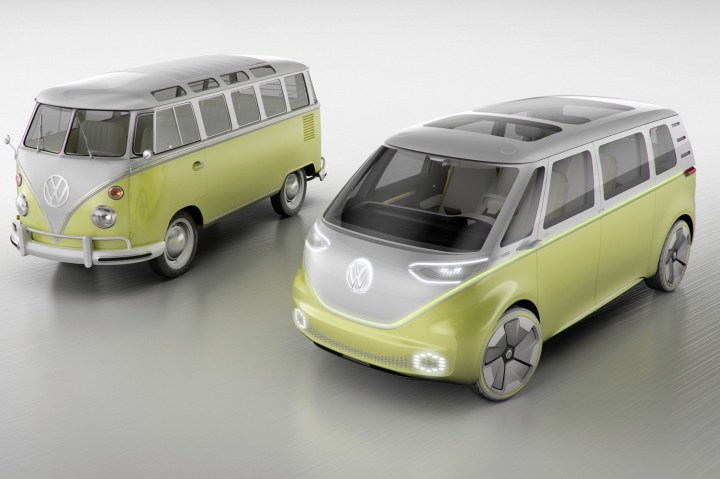
The Volkswagen ‘I.D. Buzz’ concept, which combined retro styling inspired by the classic Microbus with a modern electric powertrain and other amenities, has the green light for production. At the 2017 Pebble Beach Concours d’Elegance, VW announced that it will hit showrooms in 2022.
Officially known as the Type 2, the original Microbus became an icon of 1960s style, and is still instantly recognizable today. That might explain why, according to VW CEO Herbert Diess, the company received a large number of letters and emails from customers saying “please build this car” following the I.D. Buzz concept’s debut at the 2017 Detroit Auto Show in January.
Like the original Microbus, the I.D. Buzz will be offered in both passenger-carrying and cargo configurations. VW believes the van will offer the interior space of a relatively large SUV, but with a compact footprint. Volkswagen also sold a Microbus pickup truck back in the day, but there is little chance of seeing that body style revived as well.
The production I.D. Buzz will likely retain much of the concept’s styling, since that is such a big part of the vehicle’s appeal. The concept was powered by a pair of electric motors that produced a combined 369 horsepower, and enabled all-wheel drive. A 111-kilowatt-hour battery pack allowed for a claimed range of 270 miles, and the concept was equipped with DC fast charging. Some of these specs might change for the production version, but a range of over 200 miles seems like a must in this post-Chevrolet Bolt EV/Tesla Model 3 market.
Volkswagen designed the I.D. Buzz concept for autonomous driving, even giving it a steering wheel that retracted into the dashboard when autonomous mode was activated. That particular feature probably won’t be available on the production version, although VW did say the I.D. Buzz will be capable of “highly automated driving.”
The I.D. Buzz will be part of a family of Volkswagen electric cars, all sharing a common platform. This will also include a production version of the I.D. hatchback concept, which will go on sale sometime before the I.D. Buzz. But according to a recent Autoblog report, the first new VW electric car to arrive in the United States will be the I.D. Crozz crossover. That makes sense, given Americans’ current obsession with utility vehicles.


